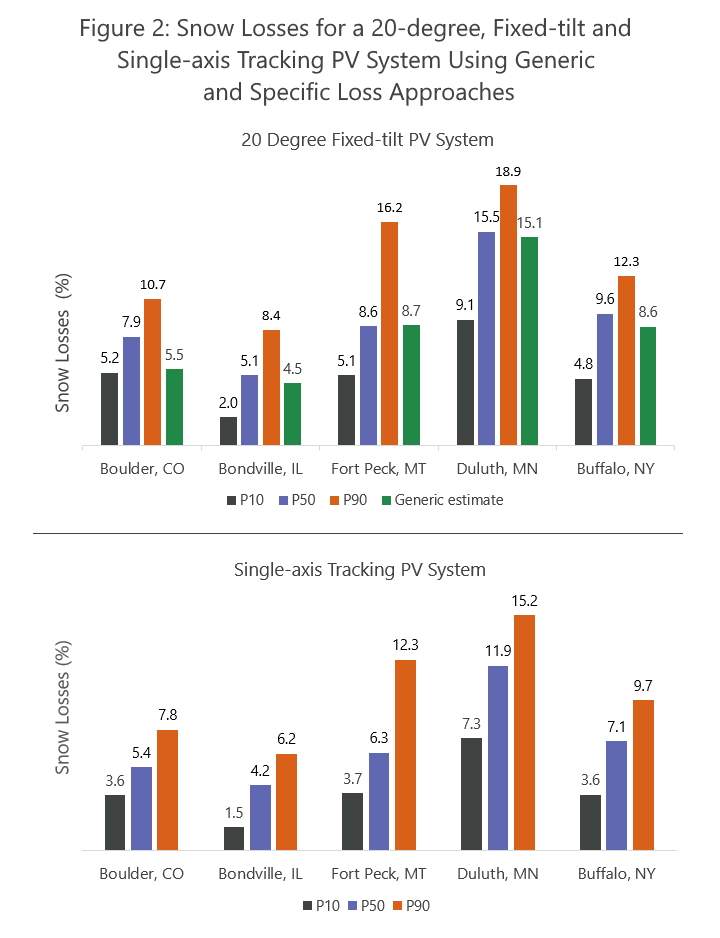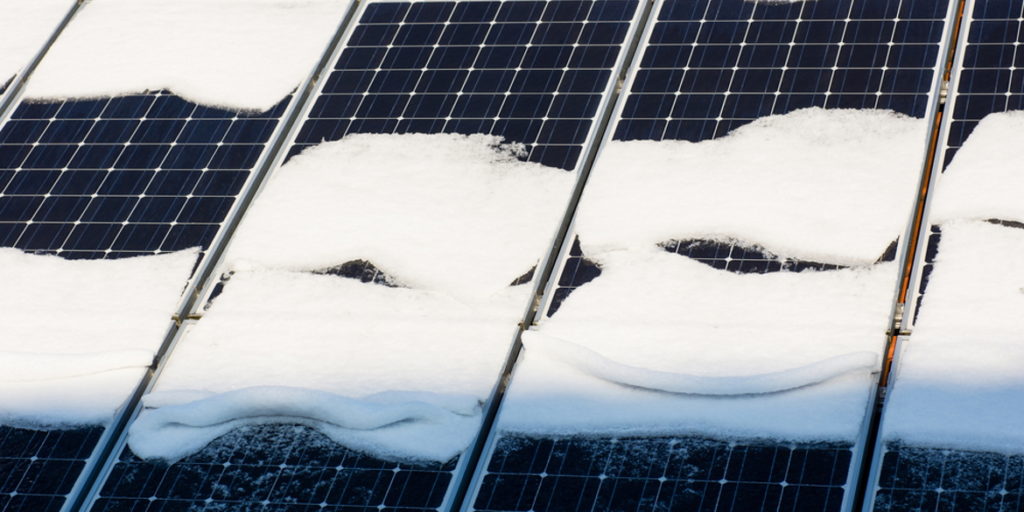A rapid decline in solar technology costs and ambitious federal and state-level renewable energy targets have accelerated the deployment of solar PV across diverse geographical regions. This has allowed solar generation to become viable even in northern latitudes and areas with snowy climates. Accumulated snow can reduce the energy output of a solar PV system, however, by obstructing the sunlight available for energy conversion.
PV energy losses due to snow—commonly referred to as “snow losses”—vary widely between locations. NREL has estimated that average annual snow losses can range from zero to 16% across the contiguous U.S., and can reach 40% for some sites in Alaska.
Estimating snow losses accurately can help PV system owners and financiers reduce financial and operational risk to their solar projects. However, modeling the uncertainty that results from snow losses can be complex, as several factors can affect the rate of snow accumulation and shedding. The local climate and the PV system’s configuration (such as the system tilt and tracking type) can impact the magnitude of energy losses. So how can SolarAnywhere® help you?
Model snow losses more accurately and reduce project uncertainty with SolarAnywhere Sites data
Accurate and reliable weather data is key to accurate energy and financial forecasting. Using weather data that is outdated and that lacks a long history of consistent measurements can introduce uncertainty in reported energy production estimates. Since local weather is always in flux—changing from season to season and year to year—snow losses can exhibit high seasonal and inter-annual variability. Consequently, it can be challenging to model snow losses accurately and reliably with typical-year insolation data.
Incorporating the full meteorological time-series data that is representative of the actual weather conditions at an energy site is important to see the distribution of losses by year or month. This helps ensure that energy commitments can be informed by real historical data, and not just long-term averages. With SolarAnywhere Sites, customers can easily model snow losses by using the full historical time-series weather data at their project location. Detailed information about daily weather patterns such as snow depth and ambient temperature can be leveraged by energy simulation tools to generate site-specific loss estimates.
To understand how snow loss estimates can be made more accurate, we compared two approaches:
- A “Generic Loss Approach” that uses loss estimates provided in an NREL study of the PV snow loss model in the System Advisor Model (SAM)
- A “Specific Loss Approach” that incorporates SolarAnywhere time-series data with the snow loss model in SAM
Key differences between the two approaches are listed in Figure 1.
Figure 1: Comparison of Generic Loss Approach with Specific Loss Approach
| Generic Loss Approach (NREL Study) |
Specific Loss Approach (SolarAnywhere Time-series Data SAM) |
|
|---|---|---|
| Snow Loss Model | Marion | Marion |
| Configurations estimated | 20-degree and latitude fixed-tilt | Any |
| Regions | United States | Any |
| Spatial resolution of snow data | Interpolated from 239 locations | 4 km |
| Weather period | 1961-1990 | 2004 – present |
On comparing annual snow losses for an arbitrary fixed-tilt utility scale PV system, we found that the Generic Loss Approach can result in both over- or under-estimation of snow losses, and the difference in annual energy yield using both approaches can easily reach 5-6%. This can further vary from year to year and location to location. The system configuration (such as the tracking type and tilt) can also affect the magnitude of energy losses. An NREL study compared five different system configurations and found that energy losses due to snow can be more than 9% for a low tilt fixed system.
Modeling annual snow losses is useful for evaluating system performance and visualizing the distribution of losses across a specific year. However, using multiple years of time-series weather data can improve the accuracy and reliability of average snow loss estimates by accounting for the effect of inter-annual variability. To demonstrate this, we calculated P50/P90 snow loss estimates in SAM using SolarAnyhwere historical time-series weather data from 2004-2020 and compared them with generic estimates. An arbitrary utility-scale PV system was placed across five different locations in the U.S. Two energy site configurations were considered: a 20-degree fixed-tilt, and a single-axis tracking PV system.
Figure 2 shows how the P50/P90 estimates can be made more data driven and site specific with time-series modeling compared to generic estimates derived from typical meteorological year (TMY) weather data. While P50 estimates are useful for setting performance baselines, debt providers commonly finance only the level of debt that can be covered by the energy sales in a low irradiance year. In addition, financing terms may be set on downside annual energy production (e.g., a P90 or P99 estimate). Therefore, it’s imperative to consider how the power plant performs in that scenario.
Improving the accuracy of P90 loss estimates with time-series modeling can reduce the uncertainty in reported energy estimates. This helps project owners minimize financial and operational risk to their solar project. Visit the snow-losses resource page to review our full snow-loss analysis and watch a video demonstrating how you can use SolarAnywhere Sites data to model snow losses in SAM.
By using SolarAnywhere’s high quality and trusted weather data, customers can get the maximum value for their project through specific, data-driven system loss estimates. To learn more about our trusted solar data and intelligence services, please contact us.
The post Reduce PV performance uncertainty with specific, data-driven snow-loss estimates using time-series data appeared first on SolarAnywhere.
